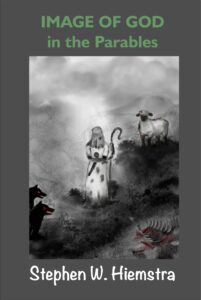The Barren Fig Tree

For no good tree bears bad fruit,
nor again does a bad tree bear good fruit,
for each tree is known by its own fruit.
(Lk 6:43-44)
By Stephen W. Hiemstra
Jesus talked frequently about fruit as a mark of identity. Just as a tree is known for its fruit, the heart is known by its actions. He said: “Thus you will recognize them by their fruits.” (Matt. 7:20) Believers and prophets alike are to be measured by their fruits. John the Baptist was even more direct, measuring repentance by the actions that followed—presumably penance—in the context of divine judgment (Matt 3:8).
The Apostle Paul also talked about fruit: “But the fruit of the Spirit is love, joy, peace, patience, kindness, goodness, faithfulness, gentleness, self-control; against such things there is no law.” (Gal. 5:22-23) He contrasted the fruit of the spirit with the desires of the flesh and the works that follow:
“Now the works of the flesh are evident: sexual immorality, impurity, sensuality, idolatry, sorcery, enmity, strife, jealousy, fits of anger, rivalries, dissensions, divisions, envy, drunkenness, orgies, and things like these.” (Gal 5:19-21)
The controlling idea here is that the desires of the heart are revealed in the actions of the body. The Apostle James underscored this same relationship and tied to the patience of a farmer who had to wait after planting seed for the rains to come and the plants to grow (Jam 5:7).
Parable of the Barren Fig Tree
Jesus told this parable:
“A man had a fig tree planted in his vineyard, and he came seeking fruit on it and found none. And he said to the vinedresser, Look, for three years now I have come seeking fruit on this fig tree, and I find none. Cut it down. Why should it use up the ground? And he answered him, Sir, let it alone this year also, until I dig around it and put on manure. Then if it should bear fruit next year, well and good; but if not, you can cut it down.” (Lk 13:6-9)
Notice the three actors in this parable: a landowner, a vinedresser, and a fig tree. The conversation here is like a discussion between God the Father (the landowner) and Jesus Christ (the vinedresser) about a certain person (the fig tree). Here the vinedresser is arguing for more time for the fig tree to yield fruit and offering to weed and fertilize the tree. The tree has no inherent value other than to yield fruit and it is not currently yielding fruit.
The landowner offers mercy to the fig tree in the form of additional growing time, but this mercy has limits—one more year to grow. In the parable of the unforgiving servant, the mercy offered was also limited—the servant whose debt was forgiven was expected to offer similar mercy to his own debtors, a kind of fruit of repentance as John the Baptist required (Matt 3:8).
Mercy as a Divine Attribute
As described above, mercy serves as a test of those receiving it with the implication that judgment will follow for those that fail the test. God’s mercy is not carte blanc: It describes who he is, but it also comes in the context of obligations and limits on our own behavior.
In law, we find two kinds of justice: Criminal justice and restorative justice. Criminal justice serves to punish offenders and leaves it up to them to abide by the law in the future by weighing the costs (suffering penalties under law) and benefits (avoiding the penalties) of compliance. Restorative justice focuses on reforming the offender. Typically, juveniles face restorative justice, while adults face criminal justice.
The Bible presents God as generally offering restorative justice. The story of Cain and Abel is an example of this restorative justice. When Cain gets angry with his brother, Abel, God advices him to deal with his anger (Gen 4:6-7). When Cain then kills Abel, God curses him to be a wanderer (4:12). When Cain complains that he cannot bare his punishment, God protects him from the revenge of other men by placing a mark on him (Gen 4:15). Had God imposed the penalty of death on Cain, it would have been criminal justice (Gen 9:6). As it was, Cain received restorative justice even though he never actually reformed.
In the parable of the Barren Fig Tree, I have always wondered how many years the vinedresser didn’t argue with the landowner for the fig tree. In our backyard we have a barren persimmon tree. I have for years argued to cut it down and for years my wife has told me: Give it one more year. Knowing the heart of God, I expect that a similar outcome would follow.
The Barren Fig Tree
Also see:
The Face of God in the Parables
The Who Question
Preface to a Life in Tension
Other ways to engage online:
Author site: http://www.StephenWHiemstra.net
Publisher site: http://www.T2Pneuma.com
Newsletter at: https://bit.ly/school_Sep2024, Signup
The post The Barren Fig Tree appeared first on T2Pneuma.net.



